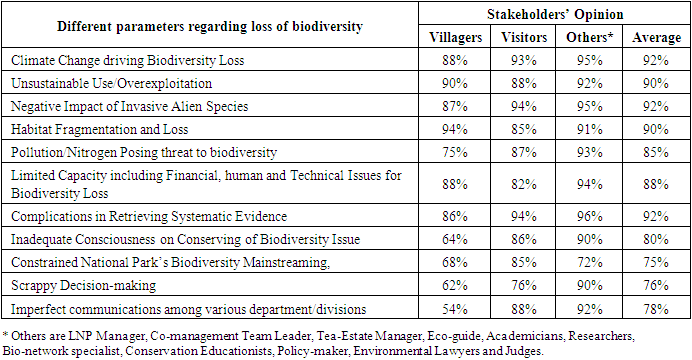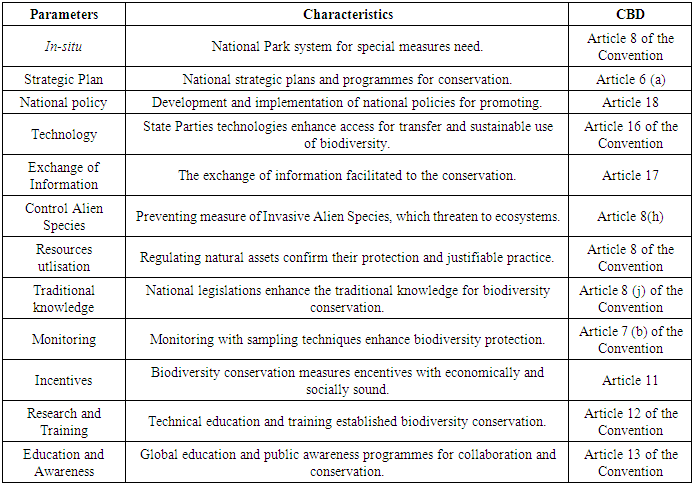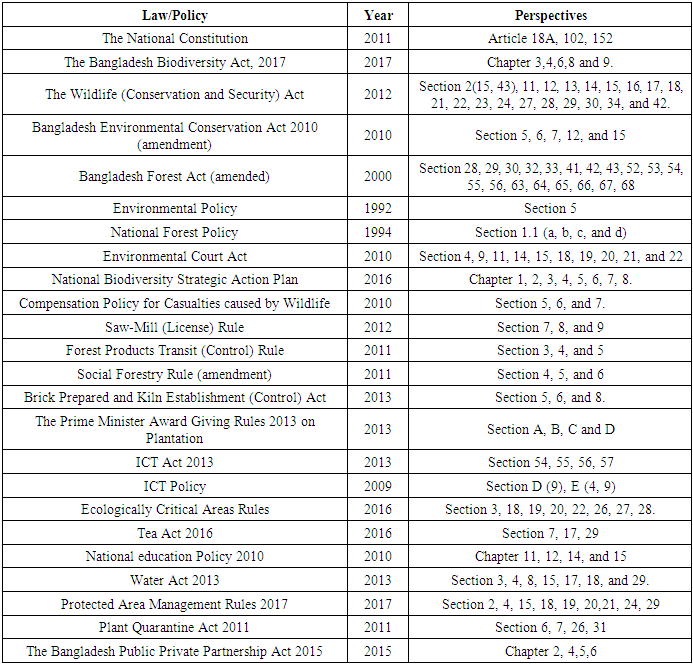| [1] | Pendrill, F., Persson, U. M., Godar, J., Kastner, T., Moran, D., Schmidt, S., & Wood, R. (2019). |
| [2] | CDC (2020, August 17). Definition of Policy. Office of the Associate Director for Policy and Strategy, Centers for Disease Control and Prevention (CDC), Atlanta, USA. url: Retrieved on December 10, 2022 from https://www.cdc.gov/policy/opaph/process/definition.html. |
| [3] | Miah, M. R., Sayok, A. K., Sarok, A., & Uddin, M. B. (2017). Towards Dynamic Policy Instruments for Enhancing Biodiversity Conservation in National Parks: A Case Study on Bangladesh and Sarawak, Malaysia. Borneo Journal of Resource Science and Technology, 7(1), 11-30. doi: https://doi.org/10.33736/bjrst.391.2017. |
| [4] | Miah, M.R. (2018). Assessment of Environmental Policy Instruments along with Information Systems for Biodiversity Conservation in Bangladesh (Doctoral dissertation, PhD Thesis. IBEC, UNIMAS, Malaysia. 1-480. Retrieved from https://ir.unimas.my/id/eprint/24535/. |
| [5] | Miah, M.R., et al. (2019). Towards Stimulating Tools for Advancement of Environmental Conservation through Promoting of Psychological Instruments. Journal of Sustainable Development, 12(4), 196-224. https://doi.org/10.5539/jsd.v12n4p196. Retrieved from https://www.ccsenet.org/journal/index.php/jsd/article/view/0/40313. |
| [6] | Miah, M.R., Mustaffa, M.S., Sabil, S., Madihie, A., Saili, J. & Sayok, A.K. (2018). Towards Dynamic Policy for Early Childhood Development Enhanced the Growth of Self-Regulations. International Journal of Engineering & Technology, 7(330), 251-255. doi: https://doi.org/10.14419/ijet.v7i3.30.18251. |
| [7] | Miah, M.R., Hasan, M.M., Parisha, J.T., Sayok, A.K. (2022). Challenges of Legal Instruments for Biodiversity Conservation along with National Parks, International Journal of Agriculture and Forestry, 12(3),79-101. doi: 10.5923/j.ijaf.20221203.03. url: http://article.sapub.org/10.5923.j.ijaf.20221203.03.html. |
| [8] | Ritchie, H. & Roser, M. (2021). Forests and Deforestation. Published online at OurWorldInData.org. Retrieved from: 'https://ourworldindata.org/forests-and-deforestation'. |
| [9] | FAO and UNEP. (2020). The State of the World’s Forests 2020. Forests, biodiversity and people. Rome. |
| [10] | Williams, M. (2003). Deforesting the earth: from prehistory to global crisis. University of Chicago Press. |
| [11] | Ellis, E. C., Beusen, A. H., & Goldewijk, K. K. (2020). Anthropogenic Biomes: 10,000 BCE to 2015 CE. Land, 9(5), 129. |
| [12] | Kump, L. R., Kasting, J. F., & Crane, R. G. (2004). The Earth System (Vol. 432). Upper Saddle River, NJ: Pearson Prentice Hall. |
| [13] | Williams, M. (2003). Deforesting the earth: from prehistory to global crisis. University of Chicago Press. FAO (2020). Global Forest Resources Assessment 2020: Main report. Rome. https://doi.org/10.4060/ca9825en. |
| [14] | Mather, A. S., Fairbairn, J., & Needle, C. L. (1999). The course and drivers of the forest transition: the case of France. Journal of Rural Studies, 15(1), 65-90. |
| [15] | Mather, A. S., & Needle, C. L. (2000). The relationships of population and forest trends. Geographical Journal, 166(1), 2-13. |
| [16] | Hosonuma, N., Herold, M., De Sy, V., De Fries, R. S., Brockhaus, M., Verchot, L., … & Romijn, E. (2012). An assessment of deforestation and forest degradation drivers in developing countries. Environmental Research Letters, 7(4), 044009. |
| [17] | Lewis, S. L., Edwards, D. P., & Galbraith, D. (2015). Increasing human dominance of tropical forests. Science, 349(6250), 827-832. |
| [18] | Williams, D. R., Clark, M., Buchanan, G. M., Ficetola, G. F., Rondinini, C., & Tilman, D. (2020). Proactive conservation to prevent habitat losses to agricultural expansion. Nature Sustainability, 1-9. |
| [19] | Hosonuma, N., Herold, M., De Sy, V., De Fries, R. S., Brockhaus, M., Verchot, L., … & Romijn, E. (2012). An assessment of deforestation and forest degradation drivers in developing countries. Environmental Research Letters, 7(4), 044009. |
| [20] | Pendrill, F., Persson, U. M., Godar, J., & Kastner, T. (2019). Deforestation displaced: trade in forest-risk commodities and the prospects for a global forest transition. Environmental Research Letters, 14(5), 055003. |
| [21] | Crowther, T. W., Glick, H. B., Covey, K. R., Bettigole, C., Maynard, D. S., Thomas, S. M., … & Tuanmu, M. N. (2015). Mapping tree density at a global scale. Nature, 525(7568), 201-205. |
| [22] | Curtis, P. G., Slay, C. M., Harris, N. L., Tyukavina, A., & Hansen, M. C. (2018). Classifying drivers of global forest loss. Science, 361(6407), 1108-1111. |
| [23] | Curtis, P. G., Slay, C. M., Harris, N. L., Tyukavina, A., & Hansen, M. C. (2018). Classifying drivers of global forest loss. Science, 361(6407), 1108-1111. |
| [24] | Hosonuma, N., Herold, M., De Sy, V., De Fries, R. S., Brockhaus, M., Verchot, L., … & Romijn, E. (2012). An assessment of deforestation and forest degradation drivers in developing countries. Environmental Research Letters, 7(4), 044009. |
| [25] | Scheffers, B. R., Joppa, L. N., Pimm, S. L., & Laurance, W. F. (2012). What we know and don’t know about Earth’s missing biodiversity. Trends in Ecology & Evolution, 27(9), 501-510. |
| [26] | Maxwell, S. L., Fuller, R. A., Brooks, T. M., & Watson, J. E. (2016). Biodiversity: The ravages of guns, nets and bulldozers. Nature, 536(7615), 143. |
| [27] | Lewis, S. L. (2006). Tropical forests and the changing earth system. Philosophical Transactions of the Royal Society B: Biological Sciences, 361(1465), 195-210. |
| [28] | Tyukavina, A., Hansen, M. C., Potapov, P. V., Stehman, S. V., Smith-Rodriguez, K., Okpa, C., & Aguilar, R. (2017). Types and rates of forest disturbance in Brazilian Legal Amazon, 2000–2013. Science Advances, 3(4), e1601047. |
| [29] | Lewis, S. L., Edwards, D. P., & Galbraith, D. (2015). Increasing human dominance of tropical forests. Science, 349(6250), 827-832. |
| [30] | Pendrill, F., Persson, U. M., Godar, J., Kastner, T., Moran, D., Schmidt, S., & Wood, R. (2019). Agricultural and forestry trade drives large share of tropical deforestation emissions. Global Environmental Change, 56, 1-10. |
| [31] | Bangladesh Post. (2022, April 23). Lawachara in danger: Get tough on grabbers. Lawachara National Park, Kamalganj, Moulvibazar, Bangladesh. url: https://bangladeshpost.net/posts/lawachara-in-danger-84373. |
| [32] | Islam, K.N., Jashimuddin, M., Hasan, K.J., Khan, M.I., Kamruzzaman, M. & Nath, T.K. (2021). Stakeholders’ Perception on Conservation Outcomes of Forest Protected Area Co-management in Bangladesh. Journal of Sustainable Forestry, DOI: 10.1080/10549811.2021.1899941. |
| [33] | Miah, M.R., Mustaffa, M.S., Jayos, S., Ibrahim, N.H., Bujang, S., Saili, J. & Sayok, A.K. (2019). Towards Stimulating Tools for Advancement of Environmental Conservation through Promoting of Psychological Instruments. Journal of Sustainable Development, 12(4), 196-224. https://doi.org/10.5539/jsd.v12n4p196. Retrieved from https://www.ccsenet.org/journal/index.php/jsd/article/view/0/40313. |
| [34] | Miah, M.R., Rahman, A.A.M.S., Khan, M.S., Samdany, A.A., Hannan, M.A., Chowdhury, S.H. & Sayok, A.K.. (2020). Impact of Sensor Technology Enhancing Corona Disease. American Journal of Biomedical Engineering, 10(1), 1-11. https://doi.org/10.5923/j.ajbe.20201002. Retrieved from http://article.sapub.org/10.5923.j.ajbe.20201001.03.html. |
| [35] | Miah, M.R., Khan, M.S., Rahman, AAMS., Samdany, AA., Hannan, M.A., Chowdhury, S.H. & Sayok, A.K. (2020a). Impact of Sensor Networks towards Individuals Augmenting Causes of Diabetes. International Journal of Diabetes Research, 9(2), 1-10. https://doi.org/10.5923/j.diabetes.20200902. Retrieved from http://article.sapub.org/10.5923.j.diabetes.20200902.02.html. |
| [36] | Miah, M.R., Rahman, A.A.M.S., Parisa, J.T., Hannan, M.A., Khan, M.S., Samdany, A.A., Sayok, A.K. & Chowdhury, S.H. (2021). Discovery of Coronavirus with Innovative Technology. Science and Technology, 11(1), 7-29. https://doi.org/10.5923/j.scit.20211101.02. Retrieved from http://article.sapub.org/10.5923.j.scit.20211101.02.html. |
| [37] | Miah, M.R., Rahman, A.A.M.S., Khan, M.S., Hannan, M.A., Hossain, M.S., Shahriar, C.S., Hossain, S.A.M.I., Talukdar, M.T.H., Samdany, A.A., Alam, M.S., Uddin, M.B., Sayok, A.K. & Chowdhury, S.H. (2021a). Effect of Coronavirus Worldwide through Misusing of Wireless Sensor Networks. American Journal of Bioinformatics Research, 11(1), 1-31. https://doi.org/10.30564/jer.v3i1.2826. Retrieved from http://article.sapub.org/10.5923.j.bioinformatics.20211101.01.html. |
| [38] | Miah, M.R., Rahman, A.A.M.S., Samdany, A.A. & Chowdhury, S.H. (2021b). A Dynamic Scientific Model for Recovery of Corona Disease. Frontiers in Science, 11(1), 1-17. https://doi.org/10.30564/jer.v3i1.2826. Retrieved from http://article.sapub.org/10.5923.j.fs.20211101.01.html. |
| [39] | Miah, M.R., Hannan, M.A., Rahman, A.A.M.S., Khan, M.S., Hossain, M.M., Rahman, I.T., Hossain, M.S., Shahriar, C.S., Uddin, M.B., Talukdar, M.T.H., Alam, M.S., Hossain, S.A.M.I., Samdany, A.A., Chowdhury, S.H. & Sayok, A.K. (2021c). Processed Radio Frequency towards Pancreas Enhancing the Deadly Diabetes Worldwide. Journal of Endocrinology Research, 3(1), 1-20. doi: https://doi.org/10.30564/jer.v3i1.2826. |
| [40] | Miah, M.R., Hasan, M.M., Parisa, J.T., Alam, M.S., Akhtar, F., Begum, M., Shahriar, C.S., Sayok, A.K., Abdullah, F., Shamsuddin, M.A.S., Rahman, M.S., Sharif, M.A., Rahman, AAMS., Alam, M.S., Uddin, M.B. & Chowdhury, S.H. (2021d). Unexpected Effects of Advanced Wireless Sensor Technology on Climate Change. World Environment, 11(2), 41-82. doi: 10.5923/j.env.20211102.01. Retrieved from http://article.sapub.org/10.5923.j.env.20211102.01.html. |
| [41] | Miah, M.R., Hasan, M.M., Parisa, J.T., Alam, M.S., Hossain, M.M., Akhtar, F., Begum, M., Sayok, A.K., Abdullah, F., Shamsuddin, M.A.S., Rahman, A.A.M.S., Alam, M.S. & Chowdhury, S.H. (2021e). Coronavirus: A Terrible Global Democracy, International Journal of Applied Sociology, 11(2), 46-81. doi: 10.5923/j.ijas.20211102.02. Retrieved from http://article.sapub.org/10.5923.j.ijas.20211102.02.html. |
| [42] | Miah, Miah, M.R., Rahman, A.A.M.S., Hasan, M.M., Parisa, J.T., Hossain, M.M., Hannan, M.A., Alam, M.S., Alam, M.S., Akhtar, F., Ghani, M.A., Khan, M.S., Shahriar, C.S., Sayok, A.K., Begum, M., Malik, S.U.F., Samdany, A.A., Ahmed, G.& Chowdhury, S.H. (2021f). Adverse Effects of Wireless Sensor Technology to Debilitating in Numbness. International Journal of Virology and Molecular Biology, 10(1), 12-25. doi: https://doi.org/10.5923/j.ijvmb.20211001.03. Retrieved from http://article.sapub.org/10.5923.j.ijvmb.20211001.03.html. |
| [43] | Miah, M.R., Miah, M.R., Sayok, A.K., Rahman, A.A.M.S., Samdany, A.A., Akhtar, F., Azad, A.K., Hasan, M.M., Khan, M.S., Alam, M.S., Alam, M.S., Uddin, M.B., Abdullah, F., Shahriar, C.S., Shamsuddin, M.A.S., Uddin, M.B., Sarok, A., Rahman, I.T., Chowdhury, S.H. & Begum, M. (2021g). Impact of Sensor Networks on Aquatic Biodiversity in Wetland: An Innovative Approach. Geosciences, 11(1), 10-42. https://doi.org/10.5923/j.geo.20211101.02. Retrieved from http://article.sapub.org/10.5923.j.geo.20211101.02.html. |
| [44] | Miah, M. R., Rahman, A. A. M. S., Sayok, A. K., Samdany, A. A. & Hannan, M. A. (2021h). How to fight the COVID-19 global crisis. World Journal of Environmental Research, 11(2), 31–38. https://doi.org/10.18844/wjer.v11i2.5855, url: https://www.un-pub.eu/ojs/index.php/wjer/article/view/5855. |
| [45] | Miah, M.R., Hasan, Hannan, M.A., Parisa, J.T., Uddin, M.J., Uddin, M.B., Rahman, A.A.M.S., Hossain, S.A.M.I., Sharif, M.A., Akhtar, F., Shamsuddin, M.A.S., Alam, M.S.E., Alam, M.S., Abdullah, F., Rahman, M.S., Uddin, M.B., Shahriar, C.S., Sayok, A.K., Begum, M., Hossain, M.M., Khan, M.S., Ahmed, G., Malik, S.U.F., Azad, M.K.H., Samdany, A.A., Ghani, M.A., Hossain, M.S., Nazrin, M.S., Tamim, M.A.K., Selim, M.A., Talukdar, M.T.H., Chowdhury, F.T., Rashid, T., Nazim, A.Y.M., Rashid, M., & Chowdhury, S.H. (2022). Myths about Coronavirus: A Research Defense. Global Journal of Health Science, 14(2), 63–112. Retrieved from https://ccsenet.org/journal/index.php/gjhs/article/view/0/46717. |
| [46] | Miah, M.R., Hasan, M.M., Parisha, J.T., Shahriar, C.S., Sayok, A.K. & Chowdhury, S.H. (2022a). Towards the Misuse of Advanced Wireless Sensor Technology to Enable the Sudden Onset of ARDS. American Journal of Medicine and Medical Sciences, 12(6), 616-638. doi: 10.5923/j.ajmms.20221206.05. Retrieved from http://article.sapub.org/10.5923.j.ajmms.20221206.05.html. |
| [47] | Miah, M.R., Hasan, M.M., Parisha, J.T., Alam, M.S., Shahriar, C.S., Akhtar, F., Begum, M., Sayok, A.K., Abdullah, F., Shamsuddin, M.A.S., Rahman, A.A.M.S., Alam, M.S., Tabassum, T., Chowdhury, S.H., Sharif, M.A., Rahman, M.S., Uddin, M.B., Tamim, M.A.K., Nazim, A.Y.M., Hannan, M.A., Uddin, M.J., Uddin, M.B., Ghani, M.G., Nipa, N.S., Khan, M.S., Ahmed, G., Hossain, M.S., Rashid, M., Beg, M.O., Samdany, A.A., Hossain, S.A.M.I., Selim, M.A., Uddin, M.F., Nazrin, M.S., Azad, M.K.H., Malik, S.U.F., Hossain, M.M. & Chowdhury, M.A.K. (2022b). Impact of Oscillated Wireless Sensor Networks to Initiate Cardiac Arrest. International Journal of Internal Medicine, 11(1), 1-46. doi: 10.5923/j.ijim.20221101.01. Retrieved from http://article.sapub.org/10.5923.j.ijim.20221101.01.html. |
| [48] | Miah, M.R., Hasan, M.M., Parisha, J.T., Shahriar, C.S., Sayok, A.K., Chowdhury, S.H. (2022). Adverse Global Health Impacts Due to the Proliferation of Man-Made Technological Heatwaves. Resources and Environment, 12(3), 67-75. doi: 10.5923/j.re.20221203.01. url: http://article.sapub.org/10.5923.j.re.20221203.01.html. |
| [49] | Parisha, J.T., Miah, M.R., Hasan, M.M., Begum, M. (2022). Impact of Environmental Pollution along with Technology for Conserving of Biodiversity. International Journal of Ecosystem, 12(1), 20-30. doi: 10.5923/j.ije.20221201.02. url: http://article.sapub.org/10.5923.j.ije.20221201.02.html. |
| [50] | Miah, M.R., Hasan, M.M., Parisha, J.T. & Chowdhury, S.H. (2022). Socioeconomic Impact of the Coronavirus Pandemic with Multiple Factors on Global Healthcare Policy. Journal of Politics and Law, 15(4), 242. doi: 10.5539/jpl.v15n4p242, url: URL: https://doi.org/10.5539/jpl.v15n4p242. |
| [51] | Miah, M.R., Mustaffa, M.S., Sabil, S., Madihie, A., Saili, J. & Sayok, A.K. (2018). Towards Dynamic Policy for Early Childhood Development Enhanced the Growth of Self-regulations. International Journal of Engineering & Technology, 7(330), 251-255. doi: https://doi.org/10.14419/ijet.v7i3.18251. |
| [52] | Miah, M.M., Hasan, M.M., Parisha, J.T., Sayok, A.K. (2022). Challenges of Legal Instruments for Biodiversity Conservation along with National Parks. International Journal of Agriculture and Forestry, 12 (3), 79-101. doi: 10.5923/j.ijaf.20221203.03. url: http://article.sapub.org/10.5923.j.ijaf.20221203.03.html. |
| [53] | Miah, M. R., Sayok, A., Sarok, A., & Uddin, M. B. (2017a). Rain Water Harvesting for Sustainable Biodiversity Conservation at Lawachara National Park in Bangladesh: A Study on Policy Challenges. OIDA International Journal of Sustainable Development, 10 (01), 11-26. Available at SSRN: https://ssrn.com/abstract=2911866. |
| [54] | Brienen, R. J. W., Caldwell, L., Duchesne, L., Voelker, S., Barichivich, J., Baliva, M., Ceccantini, G., Filippo, A.D., Helama, S., Locosselli, G.M., Lopez, L., Piovesan, G., Schöngart, J., Villalba, R. & Gloor, E. (2020). Forest carbon sink neutralized by pervasive growth-lifespan trade-offs. Nature Communications, 11(1). doi:10.1038/s41467-020-17966-z. |
| [55] | Filippo, A.D. et al. (2015). The longevity of broadleaf deciduous trees in Northern Hemisphere temperate forests: insights from tree-ring series. Front. Ecol.Evolution, 3, 46. |
| [56] | Cailleret, M. et al. (2017). A synthesis of radial growth patterns preceding tree mortality. Glob. Change Biol. 23, 1675–1690. |
| [57] | Ireland, K. B., Moore, M. M., Fulé, P. Z., Zegler, T. J. & Keane, R. E. (2014). Slow lifelong growth predisposes Populus tremuloides trees to mortality. Oecologia 175, 847–859. |
| [58] | Wyckoff, P. H. & Clark, J. S. (2002). The relation between growth and mortality for seven co-occurring tree species in the southern Appalachian Mountains. J.Ecol. 90, 604–615. |
| [59] | Rogers, B. M. et al. (2018). Detecting early warning signals of tree mortality in boreal North America using multiscale satellite data. Glob. Change Biol. 24, 2284–2304. |
| [60] | Issartel, J. & Coiffard, C. (2011). Extreme longevity in trees: live slow, die old? Oecologia 165, 1–5 (2011). |
| [61] | Hurst, J. M., Allen, R. B., Coomes, D. A. & Duncan, R. P. (2011). Size-specific tree mortality varies with neighbourhood crowding and disturbance in a montane Nothofagus forest. PLoS ONE 6, e26670–e26670. |
| [62] | Johnson, D. J. et al. (2018). Climate sensitive size-dependent survival in tropical trees. Nat. Ecol. Evol. 2, 1436. |
| [63] | Stovall, A. E., Shugart, H. & Yang, X. (2019). Tree height explains mortality risk during an intense drought. Nat. Commun. 10, 1–6. |
| [64] | Huang, J.-G. et al. (2013). Impact of future climate on radial growth of four major boreal tree species in the eastern Canadian boreal forest. PLoS ONE 8, e56758. |
| [65] | McDowell, N. G. & Allen, C. D. (2015). Darcy’s law predicts widespread forest mortality under climate warming. Nat. Clim. Change 5, 669. |
| [66] | Needham, J. F., Chambers, J., Fisher, R., Knox, R. & Koven, C. D. (2020). Forest responses to simulated elevated CO2 under alternate hypotheses of size-and age-dependent mortality. Glob. Change Biol. https://doi.org/10.1111/gcb.15254 (2020). |
| [67] | Allen, C. D. et al. (2010). A global overview of drought and heat-induced tree mortality reveals emerging climate change risks for forests. Ecol. Manag. 259, 660–684. |
| [68] | Yu, K. et al. (2019). Pervasive decreases in living vegetation carbon turnover time across forest climate zones. Proc. Natl Acad. Sci. USA 116, 24662–24667. |
| [69] | Peng, C. et al. (2011). A drought-induced pervasive increase in tree mortality across Canada's boreal forests. Nat. Clim. change 1, 467. |
| [70] | Duchesne, L., D’Orangeville, L., Ouimet, R., Houle, D. & Kneeshaw, D. (2017). Extracting coherent tree-ring climatic signals across spatial scales from extensive forest inventory data. PloS ONE 12, e0189444. |
| [71] | López, L., Rodríguez-Catón, M. & Villalba, R. (2019). Convergence in growth responses of tropical trees to climate driven by water stress. Ecography 42, 1899–1912. |
| [72] | Voelker, S. L. (2011). in Size-and age-related changes in tree structure and function. Springer, 455–479. |
| [73] | Hijmans, R. J., Cameron, S. E., Parra, J. L., Jones, P. G. & Jarvis, A. (2005). Very high-resolution interpolated climate surfaces for global land areas. Int. J. Climatol. 25, 1965–1978. |
| [74] | Caspersen, J. P., Vanderwel, M. C., Cole, W. G. & Purves, D. W. (2011). How stand productivity results from size-and competition-dependent growth and mortality. PloS ONE 6, e28660. |
| [75] | Jones, P. D. & Moberg, A. (2003). Hemispheric and large-scale surface air temperature variations: An extensive revision and an update to 2001. J. Clim. 16, 206–223. |
| [76] | Afzal, S., Kavitha, G., & Dar, A. A. (2022). A Cloud Computing-Based Model for Wildlife Conservation and Health Care Improvement in Endangered Wild Life Animals. In I. Management Association (Ed.), Research Anthology on Ecosystem Conservation and Preserving Biodiversity, 182-195). IGI Global. https://doi.org/10.4018/978-1-6684-5678-1.ch010. |



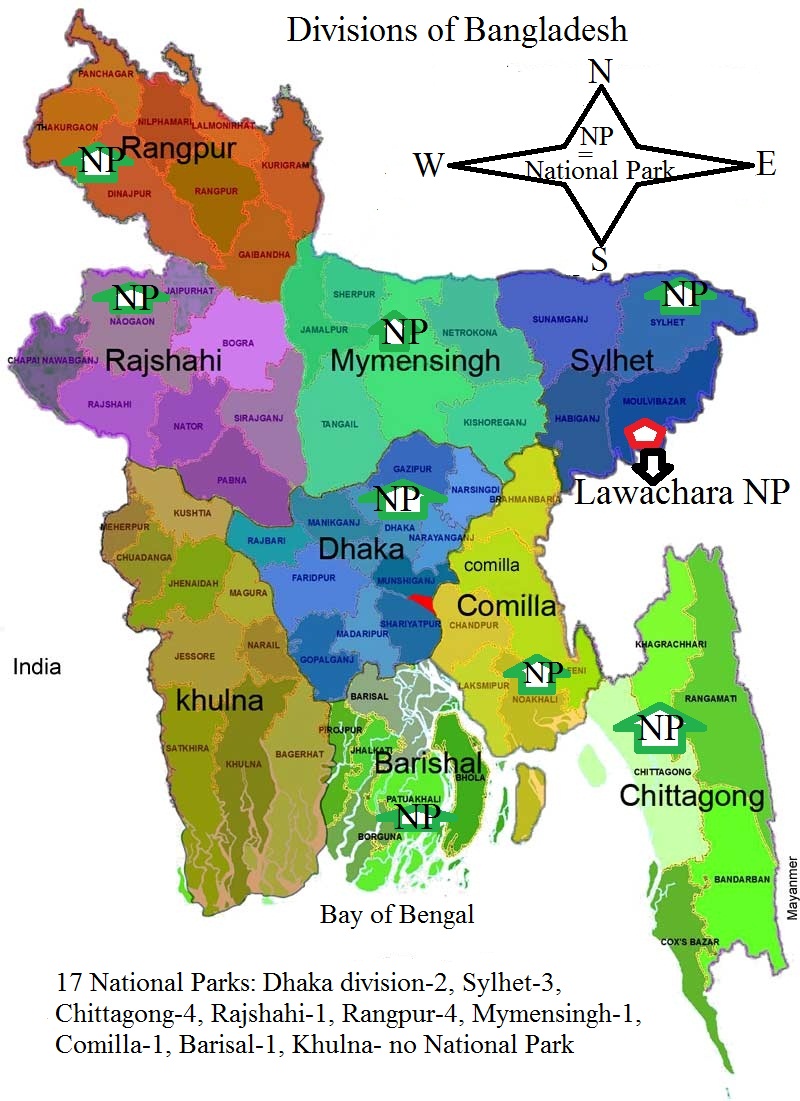



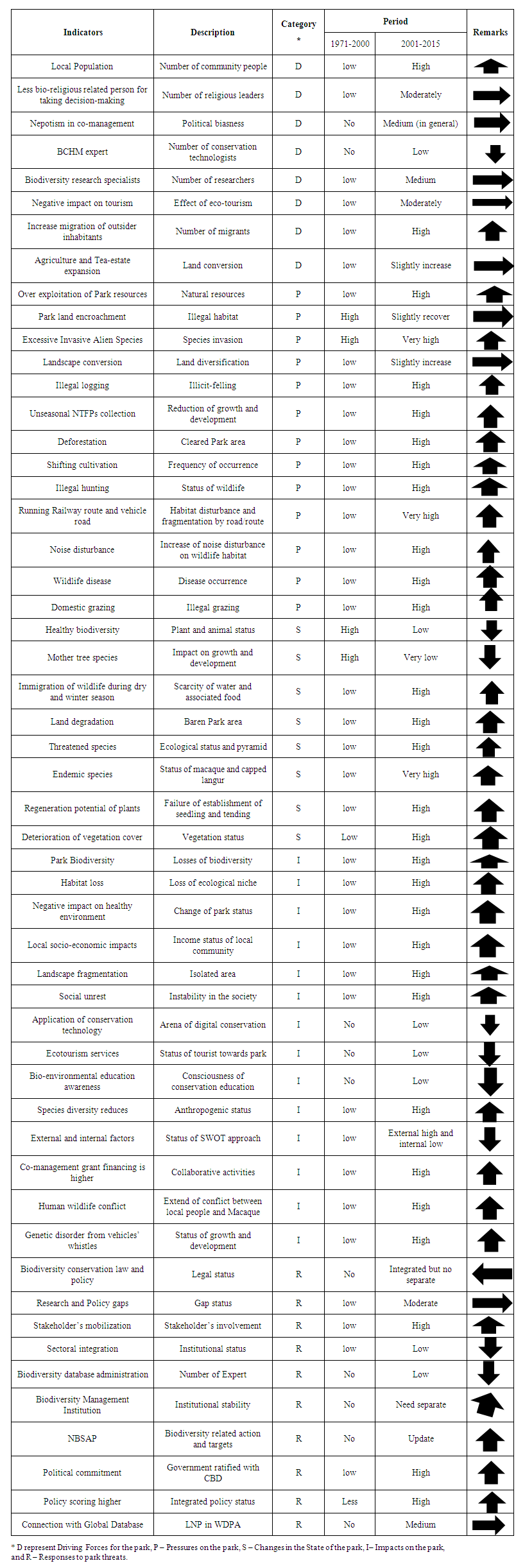
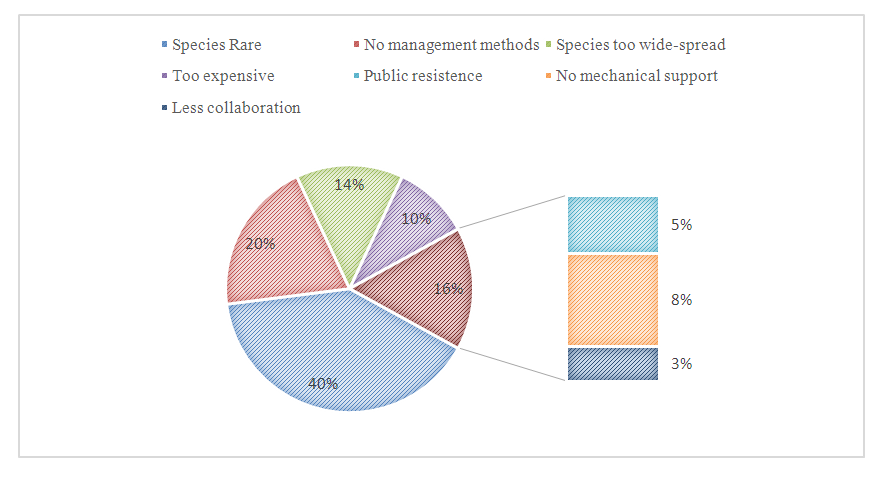
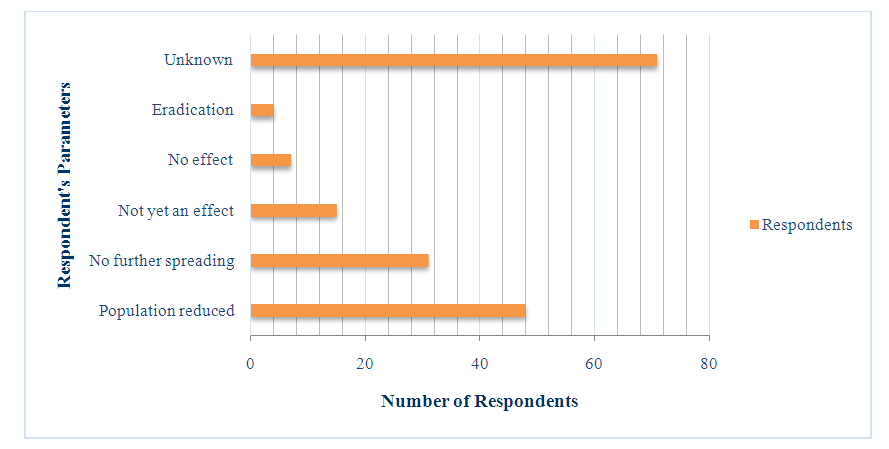


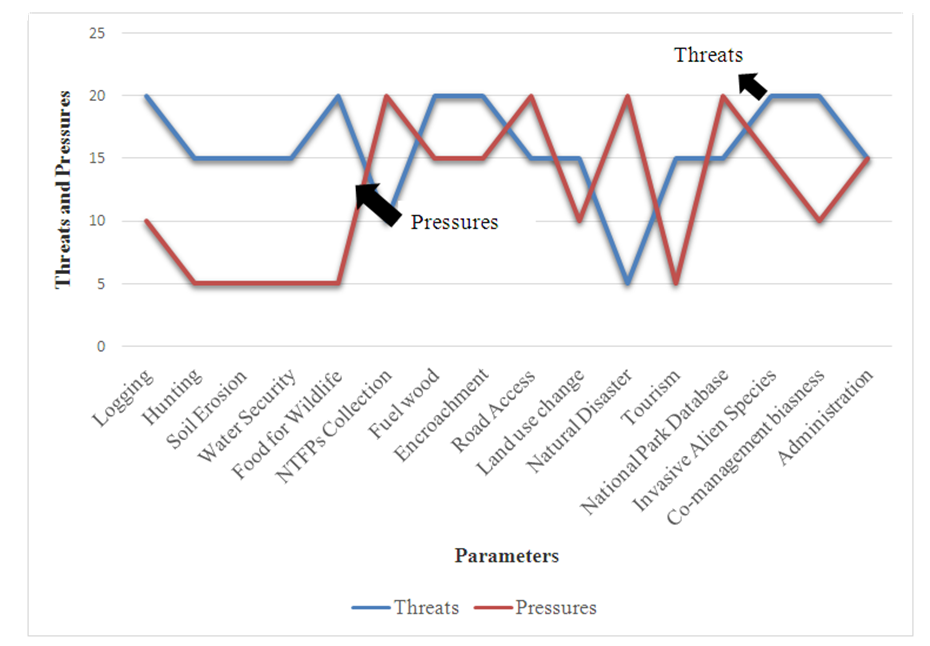
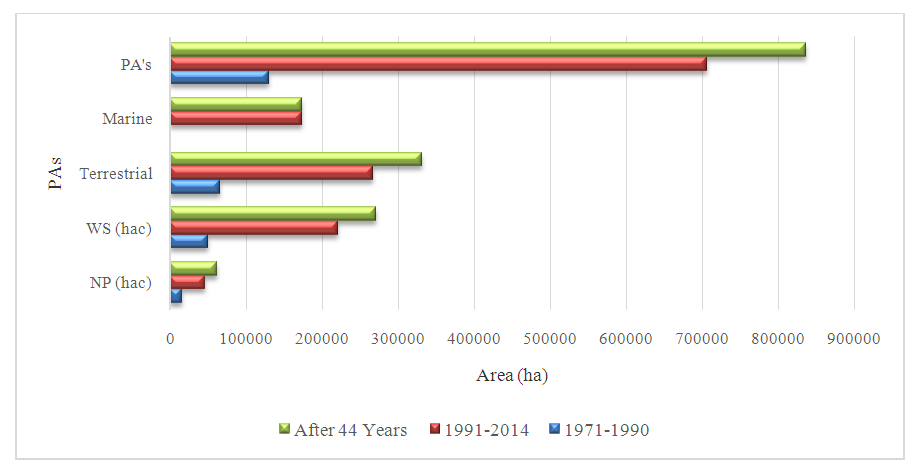

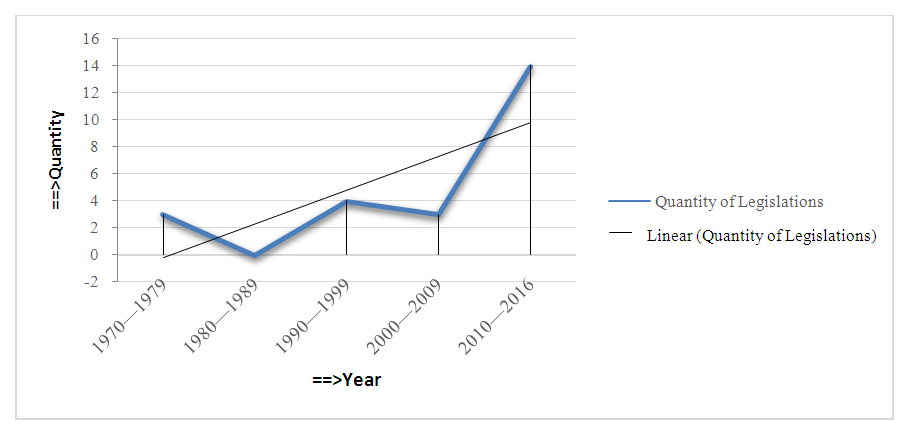
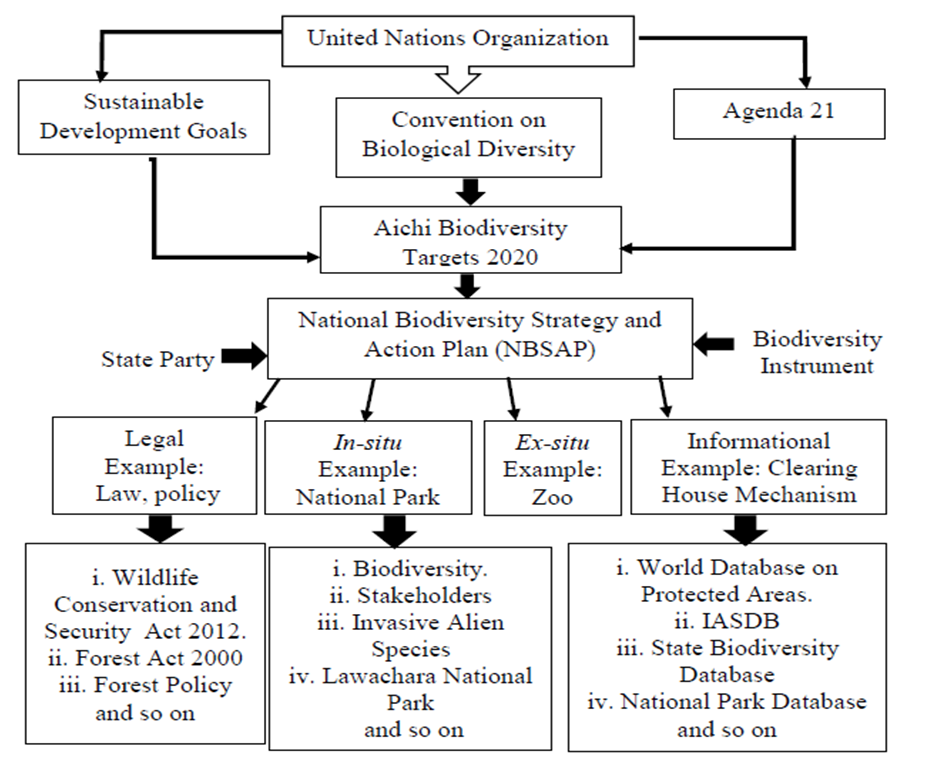
 Abstract
Abstract Reference
Reference Full-Text PDF
Full-Text PDF Full-text HTML
Full-text HTML




